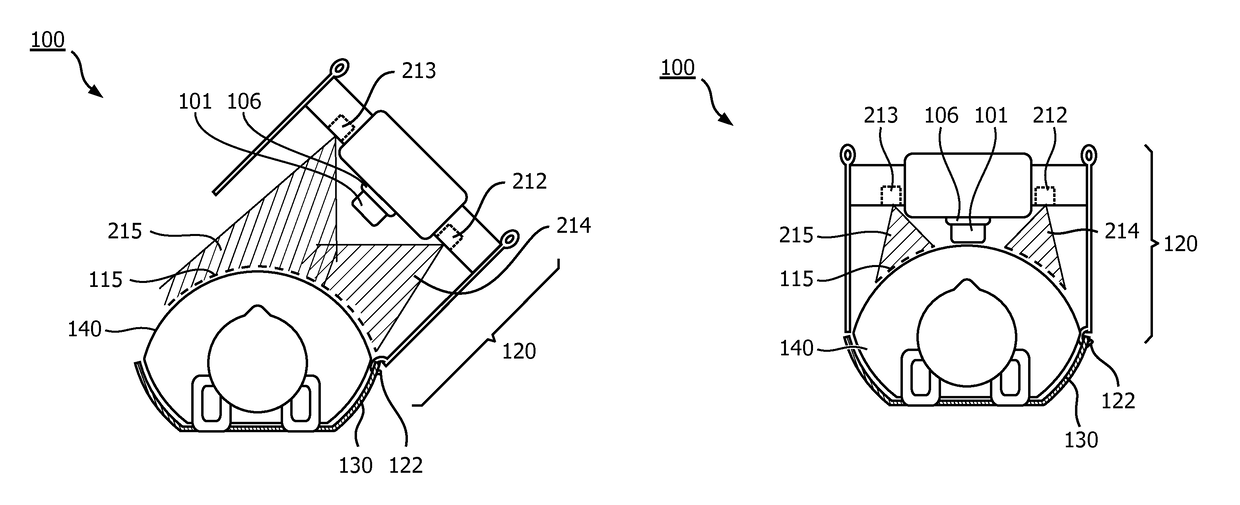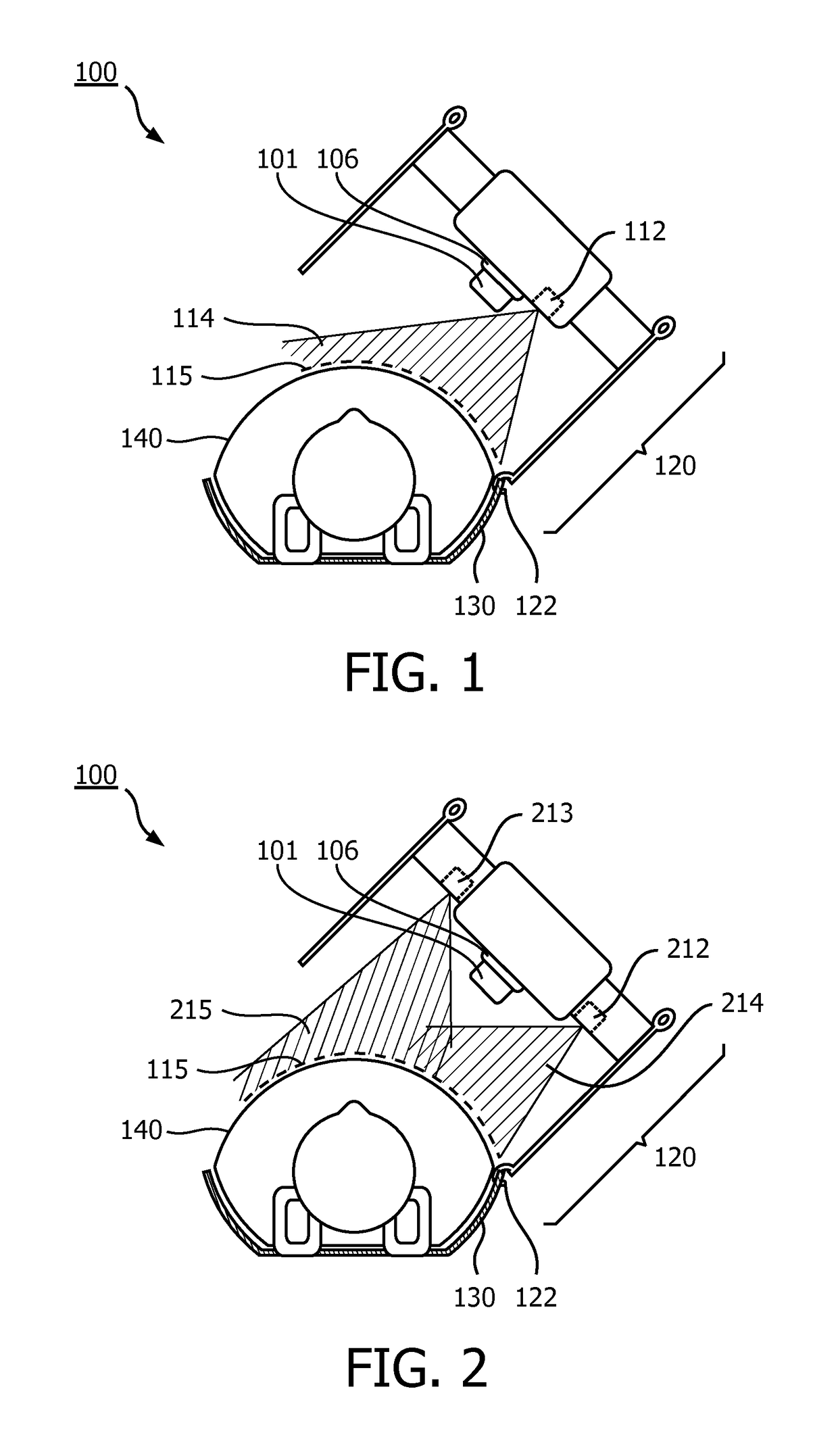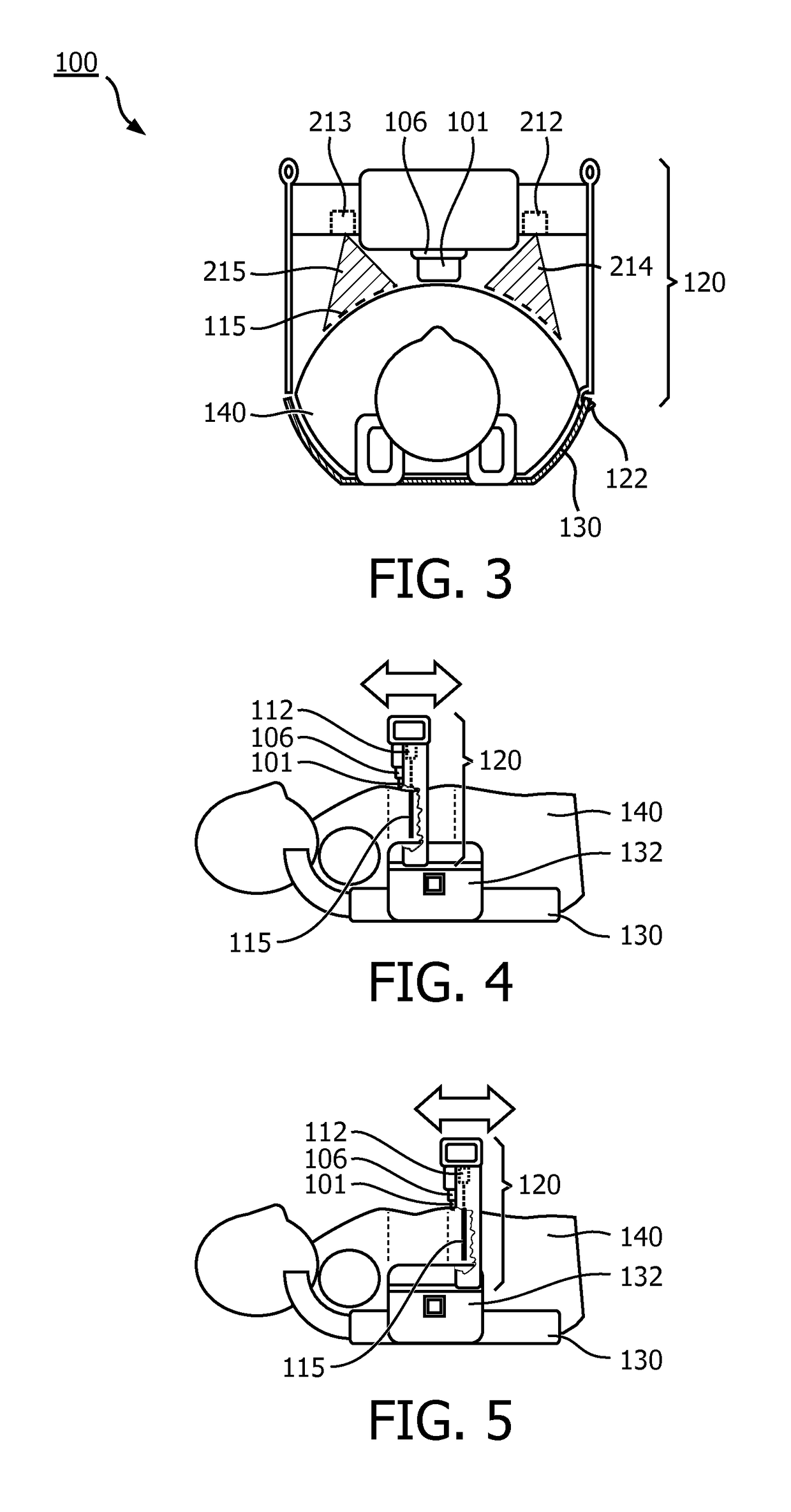Laser alignment for automated CPR device
a cardiopulmonary resuscitation and laser alignment technology, applied in the field of automatic cardiopulmonary resuscitation devices, can solve the problems of long set-up time, difficult to administer consistent, high-quality manual chest compressions, severe cell damage and death, etc., to reduce the number of attempts, no flow, and limit the time
- Summary
- Abstract
- Description
- Claims
- Application Information
AI Technical Summary
Benefits of technology
Problems solved by technology
Method used
Image
Examples
Embodiment Construction
[0031]In FIG. 1 an automated cardiopulmonary resuscitation (ACPR) device 100, according to the teachings disclosed herein, is shown. The ACPR device 100 is shown in a front view during a placement procedure of the ACPR device 100 on a patient 140. The ACPR device 100 comprises a compression element 101 which is configured and arranged for exerting a mechanical force on a chest of the patient 140, preferably to the patient's sternum in a controlled but still forceful way. The compression element 101 is moved up and down when the ACPR device 100 is installed on the patient 140 and the patient is laid back down. The movement of the compression element 101 is provided by an actuator 106 which is schematically shown in FIG. 1 and other figures accompanying this description. The actuator is mounted to or within a portal 120. The portal 120 is configured and arranged for mounting to a backboard 130 by means of connectors 122, such as hinges, latches or the like. The portal 120 may be detac...
PUM
 Login to View More
Login to View More Abstract
Description
Claims
Application Information
 Login to View More
Login to View More - R&D
- Intellectual Property
- Life Sciences
- Materials
- Tech Scout
- Unparalleled Data Quality
- Higher Quality Content
- 60% Fewer Hallucinations
Browse by: Latest US Patents, China's latest patents, Technical Efficacy Thesaurus, Application Domain, Technology Topic, Popular Technical Reports.
© 2025 PatSnap. All rights reserved.Legal|Privacy policy|Modern Slavery Act Transparency Statement|Sitemap|About US| Contact US: help@patsnap.com



